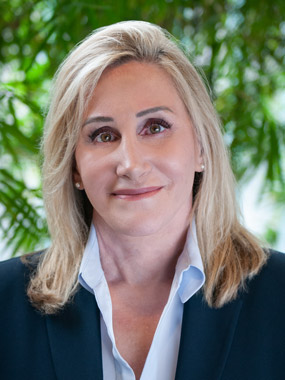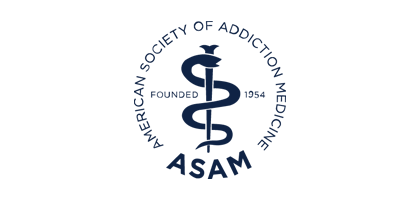Blog
ASAM’s Updated Tobacco Use Disorder Course Goes Live in November

While trends associated with opioid use disorder (OUD) and alcohol use disorder (AUD) continue to rightfully hold much of our national attention, the leading cause of substance use death -- tobacco use disorder (TUD) -- continues to quietly kill.
To raise awareness of this underrecognized trend, ASAM is offering an updated course focusing on the importance of integrating tobacco cessation treatment, either simultaneously or sequentially, during addiction treatment. This live, virtual course will take place on Thursday, Nov. 9, from 3 to 6 pm Eastern. It will be facilitated by Edwin A. Salsitz, MD, DFASAM, an associate clinical professor at Mount Sinai, Beth Israel in New York and Alta DeRoo, MD, FACOG, FASAM, MBA, a member of ASAM’s Board of Directors and the chief medical officer for the nonprofit Hazelden Betty Ford Foundation.
“In terms of drug addictions, tobacco use disorder by far causes the most medical complications and the most deaths,” said Dr. Salsitz. “It's estimated that 480,000 people per year die from a variety of tobacco-related diseases. Nothing comes close to that.”
AUD contributes to about 140,000 deaths each year while OUD causes about 80,000 deaths each year. Although smoking rates have been trending downward for some time, vaping rates have risen. Today, roughly 28 million people 18 years old and older smoke tobacco or vape nicotine.
.png?sfvrsn=92f0b0d1_1)
“From the point of view of medical comorbidity and mortality, tobacco is really No. 1,” Dr. Salsitz added. “There's been a lot of progress made over the years in reducing tobacco use, but it's still a huge, huge problem and deserves the medical community’s attention.”
What to Expect
The highly interactive course is geared toward healthcare providers and clinicians who are seeking practical tools, resources, and effective interventions for treating patients with tobacco use disorder during addiction treatment.
“We’ve designed this course for anyone who wants to learn more about tobacco use disorder and resources for treating it, including those who want to improve outcomes for their patients who have other substance use disorders,” Dr. DeRoo said.
“The reality is that people with substance use disorders—including alcohol, opioid, and cocaine use disorders, for example—also use nicotine at higher rates than others,” DeRoo added. “Tobacco use and other addictions so frequently co-occur that we need to look at treating them simultaneously whenever possible. It's not uncommon for somebody to overcome a primary addiction only to die later from lung cancer or other conditions where tobacco use is a factor.”
Vaping and its influence on tobacco use rates will also be addressed.
“I think the data show that adolescents who vape nicotine have much higher rates of eventually smoking tobacco cigarettes than adolescents who don't vape nicotine,” Dr. Salsitz said. “It seems to be a gateway for tobacco cigarettes. And we generally don't want adolescents to be using any of these psychoactive drugs because their brains are still developing. They're not fully developed until probably the mid-20s, and the nicotine can have a deleterious impact on brain development.”
Participants will learn how to assess levels of dependence and how to match evidence-based pharmacological and behavioral support to help patients achieve lasting remission without compromising—and possibly enhancing—their overall recovery journey. Special focus on the integration in ambulatory opioid agonist treatment programs will be explored.
“Healthcare providers should attend this course to make sure they're up to date on the latest thinking about tobacco use disorder, about the latest medications and interventions,” Dr. Salsitz said. “And they should attend to reinforce how important it is to talk to all of their patients at every visit about tobacco and try to make some headway into getting people to stop smoking.”
A Dedication to Education
Both Drs. Salsitz and DeRoo are committed to educating ASAM members on longstanding and emerging addictions and treatments.
An internist by training, Dr. Salsitz entered the field of addiction medicine in 1990. Since joining ASAM in 1998, he has attended several courses and has been a course director or co-director for many others.
“It's all been very enjoyable,” he said. “When you teach a course, you meet and interact with new people; you hear new questions and learn new things yourself; and you study. You actually improve your own knowledge base. It’s all part of keeping up with things and staying current.”
Dr. Salsitz, who received the 2018 ASAM Educator of the Year Award, said he’s looking forward to teaching the tobacco use disorder course, adding that it includes updated information ASAM members need to know.
Dr. DeRoo, a board-certified addiction medicine physician and OBGYN who also earned her MBA last year, developed a passion for treating addiction while serving in the U.S. Navy for 24 years.
“I saw many soldiers, sailors, shipmates and battle buddies, as well as family members, who struggled with substance use,” she said. “I also got to see healing, and that’s what ultimately inspired me the most—the wonderful, transformative power of recovery.”
Recognized in 2022 by the American Medical Women's Association for her inspirational leadership, vision, integrity, collaboration, and service, Dr. DeRoo is the first woman to serve as chief medical officer of Hazelden Betty Ford and a leading expert on maternal and fetal health implications of substance use disorder treatment. She has authored many publications and curricula and says educating others about addiction and recovery is a key personal and professional priority.
“I keep teaching because there are always more people to reach with hope, healing, and quality care,” she said. “If we’re going to address this public health issue holistically, we need to consider tobacco use disorder, too, and that’s why I’m excited to co-facilitate this course with Dr. Salsitz.”


27b70615-d214-4671-8499-2407312a7031.png?sfvrsn=131b083f_1)

.png?sfvrsn=5c278de7_1)
.png?sfvrsn=ec33ebd9_1)